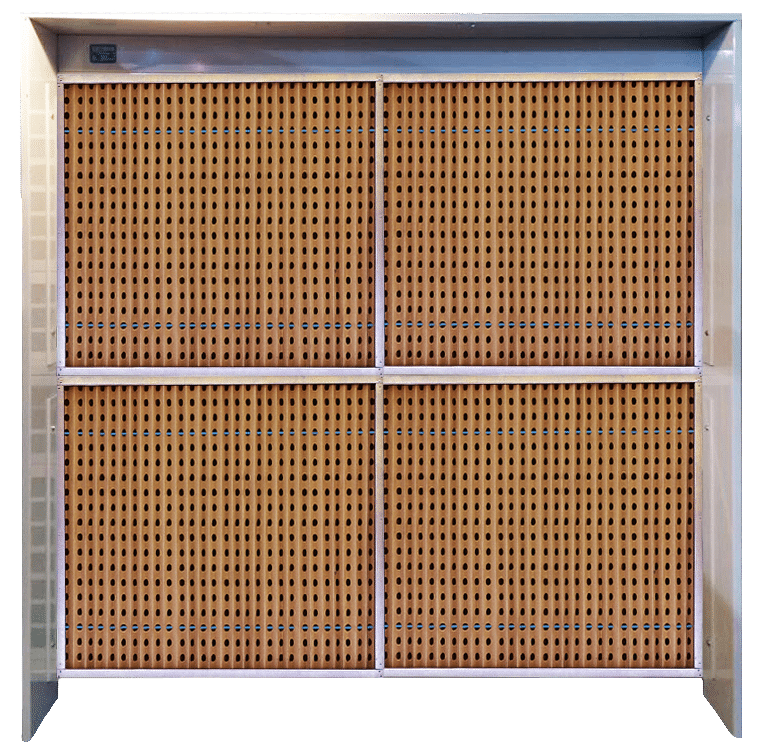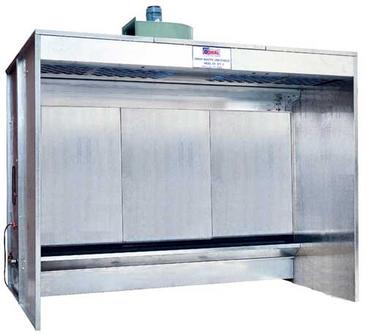What is the difference between wash booth and dry booth?
During manufacturing operations, spray painting is usually performed in a booth to control the introduction of contaminants and the release of solvent and paint to the work place and environment, and to reduce the likelihood of explosions and fires.
For liquid coating, there is two types of paint booths: dry filter or water wash. The using of these two types depend mainly on production requirements (configuration, production rate, material being sprayed, finish quality requirement…).

A dry filtration uses dry filter media, to capture any wet solids or liquid particles from the constant airstream passing through the exhaust filter.
Most of the time they consist of mattresses of non-woven fire reaction fiber materials: not flammable. These materials can be very efficient but you have to check them to avoid clogging. For checking the filters, a control device must be installed to determine when the filters must be changed in order to comply with the minimum spray booth ventilation conditions.
Benefits of dry filters are decreased operating costs: no water, chemical, or sewer costs, reduced waste generation and labor, and increased particle arrestance efficiency.

Water filtration can be used in open and closed horizontal ventilation booths.
Water wash booths are designed to minimize particle matter emissions. Water continuously circulates through the system and is discharged into a container or pit where it is chemically treated with detackifiers, flocculants and defoamers to coagulate particulates into larger particles and remove stickiness. Sunken particulates form sludge which is decanted and shoveled into containers for waste disposal. Floating particulates are skimmed from the surface of the water for disposal. In some applications, particulates are collected, washed, homogenized, dewatered and blended with virgin coating for reuse.
If make-up water is not continuously added to the system, the exhaust will become inefficient in removing particles and may result in particle recirculation. The addition of alkali and oil will keep the water at the correct pH and chemical composition to ensure effective removal of particulates. A sight glass is used to monitor water conditions and levels, the best indicator of water filter performance.
The primary disadvantage of water curtains is the generation of wastewater and sludge. Additional costs include water, chemicals, labor, wastewater treatment and hazardous material (sludge) removal.

